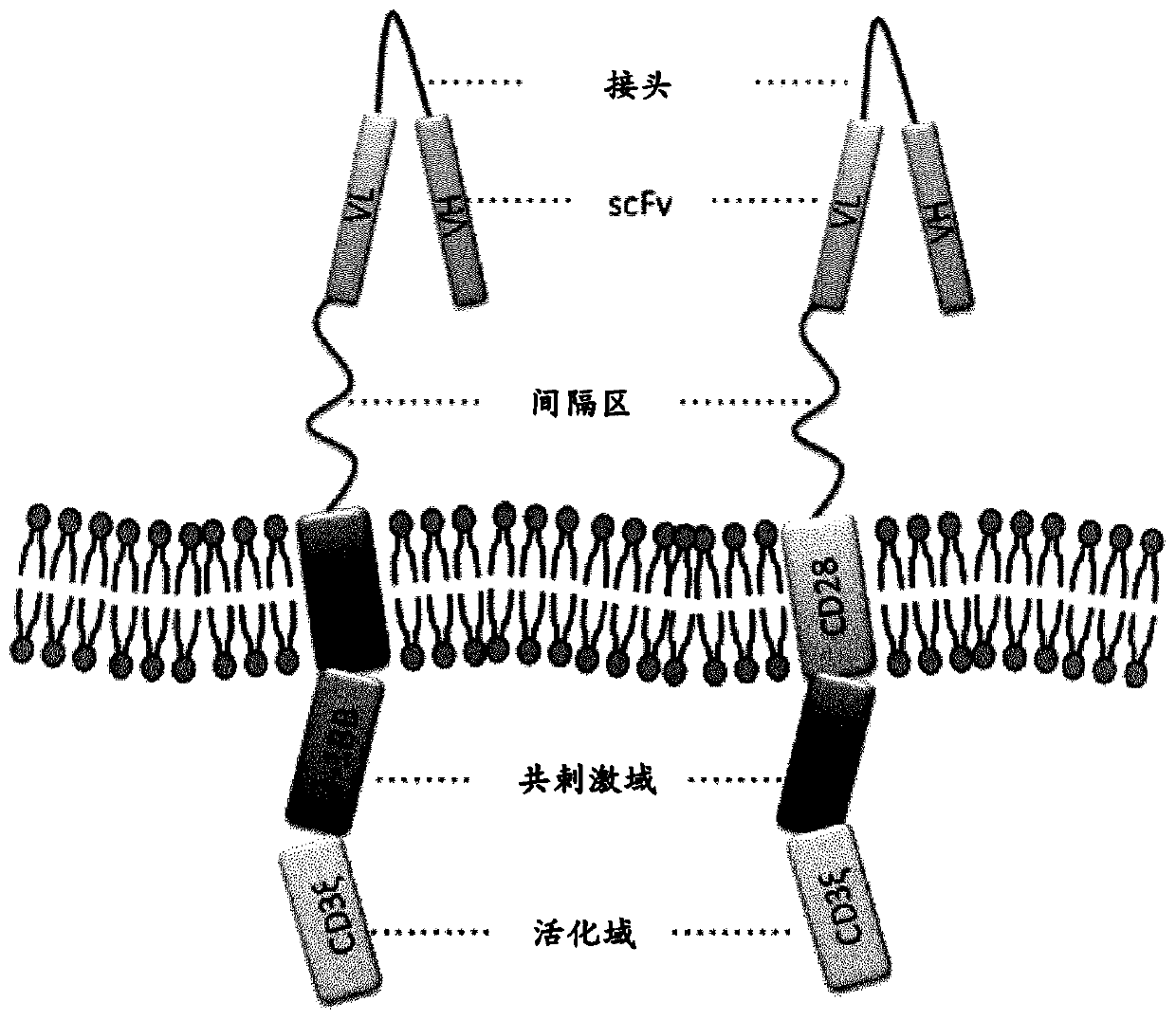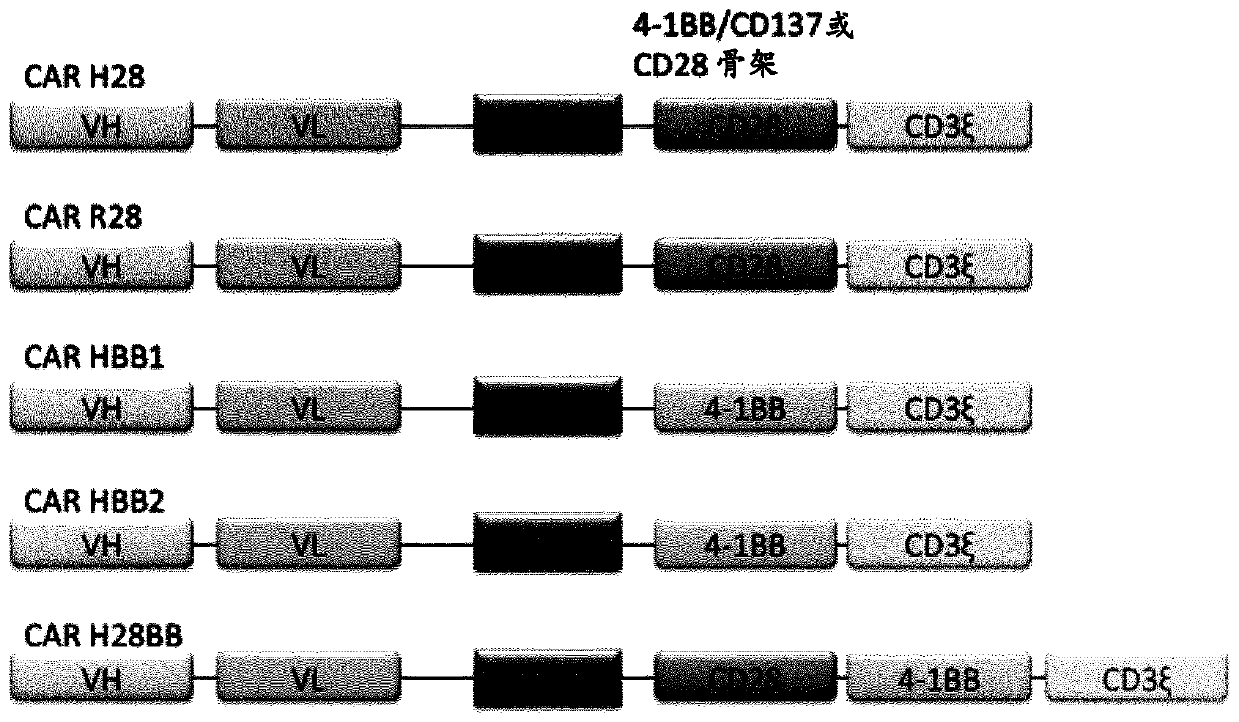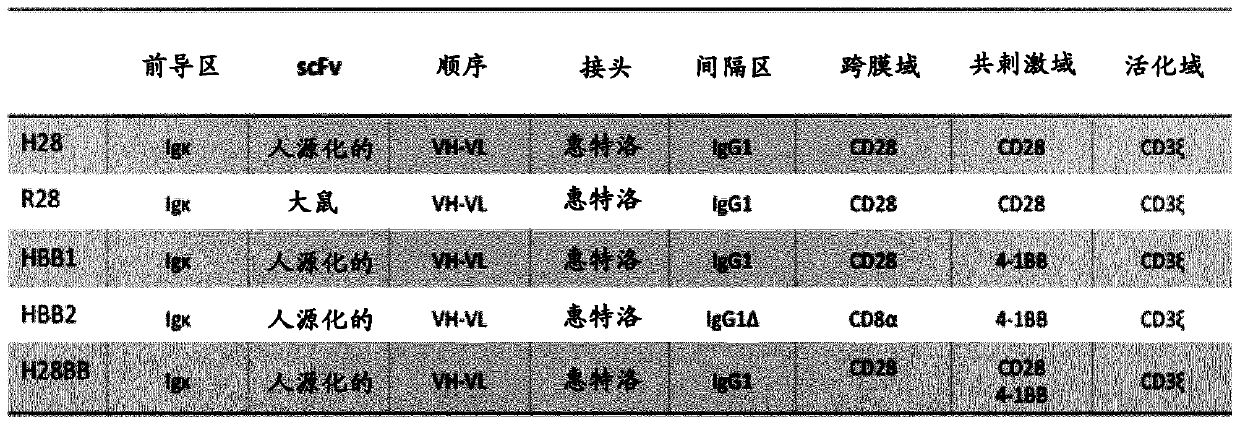Chimeric antigen receptor and car-t cells that bind cxcr5
A chimeric antigen receptor and antigen technology, which is applied in the field of reviewing various CAR technologies, can solve the problems of no CAR components and no mention of medical uses.
- Summary
- Abstract
- Description
- Claims
- Application Information
AI Technical Summary
Problems solved by technology
Method used
Image
Examples
Embodiment Construction
[0182] Chimeric Antigen Receptors:
[0183] According to the present invention, a chimeric antigen receptor polypeptide (CAR) comprises an extracellular antigen binding domain comprising an antibody or antibody fragment that binds a target antigen, a transmembrane domain and an intracellular domain. A CAR is generally described as comprising an extracellular domain (antigen-binding domain) derived from an antibody and an intracellular domain comprising a signaling component derived from a T cell signaling protein.
[0184] In a preferred embodiment, the extracellular domain preferably comprises variable regions from the heavy and light chains of immunoglobulins configured as single chain variable fragments (scFv). The scFv is preferably linked to a hinge region that provides flexibility and transduces signals by anchoring the transmembrane portion to the intracellular signaling domain. The transmembrane domain is preferably derived from CD8α or CD28. In first-generation CA...
PUM
 Login to View More
Login to View More Abstract
Description
Claims
Application Information
 Login to View More
Login to View More - R&D Engineer
- R&D Manager
- IP Professional
- Industry Leading Data Capabilities
- Powerful AI technology
- Patent DNA Extraction
Browse by: Latest US Patents, China's latest patents, Technical Efficacy Thesaurus, Application Domain, Technology Topic, Popular Technical Reports.
© 2024 PatSnap. All rights reserved.Legal|Privacy policy|Modern Slavery Act Transparency Statement|Sitemap|About US| Contact US: help@patsnap.com










